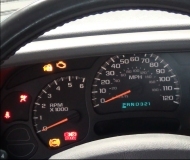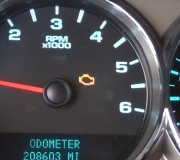Another approach is to connect a scanner to view live data on a test drive. That will allow you to see what the various sensors are reporting when the problem occurs. Most scanners have a record function that allows a few seconds of sensor data to be recorded. You drive with it connected, then push the button when the problem occurs. Because that data passes through the scanner's memory, the recording actually starts a couple of seconds before you pressed the button. You can replay that data later to see frame by frame what each sensor reported to get a clue of where to start looking.
The Engine Computer is definitely the very last thing to even think about until every other possible cause is eliminated. Chrysler had almost no problems with theirs in the early to mid '90s. Everyone likes to jump on the computer when they don't know what else to do and they need something to blame.
35 - Radiator fan control relay circuit, open or short detected.
62 - EMR mileage not stored.
Neither of these codes refer to something that can cause stalling or backfiring. Code 35 usually is set by a mechanic unplugging something while the ignition switch is on. Code 62 refers to the emissions maintenance reminder light. That code shouldn't even be able to set on a car. It's is related to truck emissions systems which included minivans. It's possible you have the wrong computer in your car. The 3.3L was used in minivans starting in '89. In '92 they began using a Body Computer that knew the vehicle's mileage and sent that information to the Engine Computer so it would know when to turn on the "Maintenance Required" light on the dash. If you have a '92 minivan computer, it would be waiting to learn the mileage, and it set code 62 when that information isn't showing up. Neither of those codes should turn on the Check Engine light because they don't relate to something that could adversely affect emissions.
If you still haven't found any clues by this point, the cause is very likely related to the fuel supply system. That is not monitored so there's no related fault codes, but if a problem gets bad enough you could get a code as a result of a pressure problem. Typically that would be "running lean too long. That plugged screen in the gas tank could do that. I've been driving for over a year with a fuel gauge strapped to my radio antenna on my daily driver '88 Grand Caravan. I was chasing an intermittent problem that only acted up on real hot days. It turned out to be an overheated terminal on the fuel pump motor, AND the plugged screen, for the second time in that van's life. This system runs around 45 to 50 pounds of pressure. When the problem occurred, usually when pulling a really big tandem axle enclosed trailer, the engine still ran fine as low as 20 pounds. At 15 pounds it finally started to sputter and stall. Some GM engines won't even start if the fuel pressure is five pounds low. One big reason I'm leaning toward a fuel supply problem is a sensor or computer that is failing will not take a year to do so. They can fail intermittently at first under always the same conditions, coolant temperature in your case, but eventually it will become a hard failure which is easier to find. A plugged pickup screen CAN continue to present the same symptoms for a long time. They don't usually really become plugged. They collapse from the force of the fuel being drawn through them and that blocks the opening in the supply tube. They cause stalling typically after 5 to 15 minutes of driving, and it shows up when the largest volume of fuel is being pumped, which is during coasting, but the symptoms don't go away if you keep on driving. That's the only thing you described that doesn't fit with my pickup screen story.
Monday, November 4th, 2013 AT 1:24 AM





